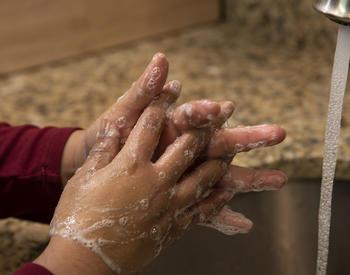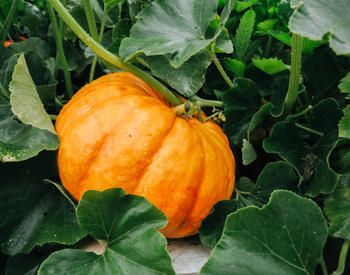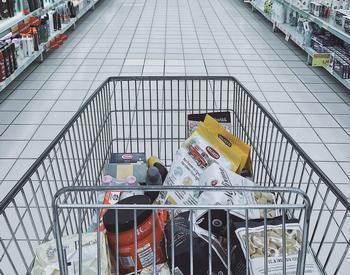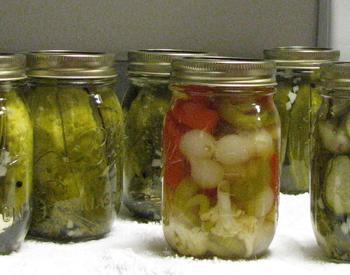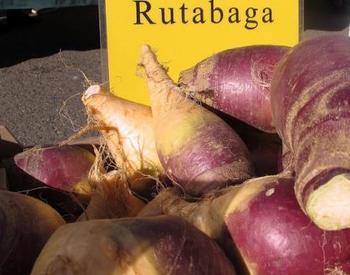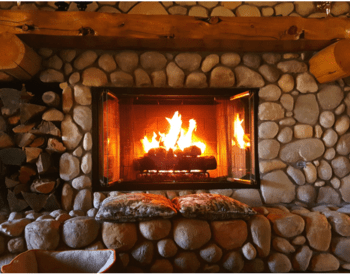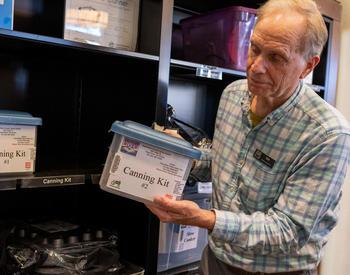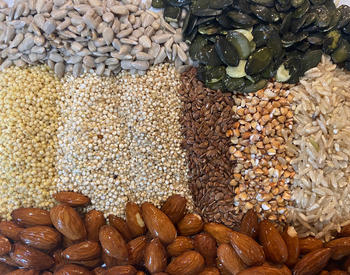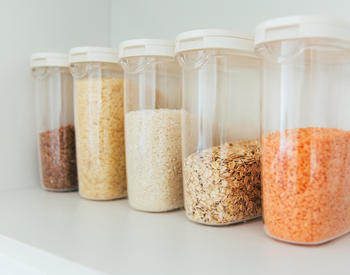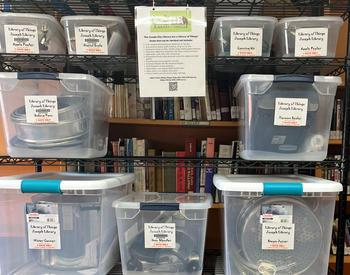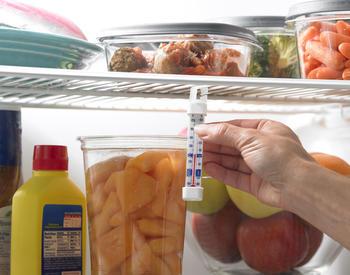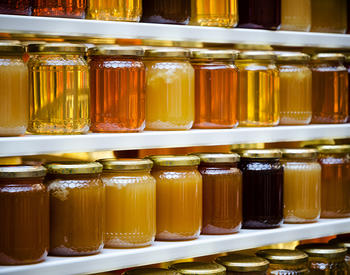Download this publication as a PDF
Summer is a time for picnics, camping, celebrations and family gatherings. Foodborne illness is common in the summer because warm temperatures promote the rapid growth of microorganisms.
People in the at-risk group (pregnant women, diabetics, infants, young children, older adults, and people with compromised immune systems, such as those on chemotherapy or undergoing radiation treatments) are more at risk.
Time passes quickly when you are having fun, so it is a good idea to set a timer and monitor how long perishable foods are left out. Adhere to the two-hour rule: discard any perishables left at room temperature for over two hours.
Moist, protein-rich foods (such as fried chicken, roast beef, ham, baked beans, potato and pasta salads, deviled eggs and cream pies) need to be handled carefully. To keep picnic food safe to eat, keep these hints in mind:
Shopping
Buy perishable foods last and get them home right away. To transport food home or to an event, have an ice chest or insulated bag in your car with ice or coolants. If you’re on your way to the picnic site, put them right into a portable ice chest or insulated bag with coolants (you can make your own ice pack by freezing water in plastic jugs). Never leave perishables in a hot car.
Event and camping set-up
Cleanliness is as important at the picnic site as it is at home. If running water is unavailable, take soap and a jug of water. Everyone should wash their hands before preparing food and eating. Disposable hand wipes can be used if you’ll be hiking some distance from your vehicle, or if no water is available at the event site. Disinfectant wipes are also handy for cleaning off tables.
Microorganisms can cling to raw fruits and vegetables. Be sure to wash them at home or the event site before serving.
Keep perishable food cold until you’re ready to serve it. When possible, put the cooler in the shade and keep the lid on. Plan to eat the food soon (preferably within an hour or two). It is a good idea to have separate ice chests for drinks so ice chests with food are not opened frequently.
Barbecuing
Cook meat and poultry thoroughly to destroy bacteria that grow in animals’ intestinal tracts. Ground meat should be well-done (brown throughout), and poultry shouldn’t be pink. For a backyard barbecue, meat can be partially cooked in the oven or microwave before grilling. Bring a thermometer to be sure the meat is cooked safely.
- Ground meat: 160° F
- Fish: 145° F
- Poultry: 165° F
- Steaks and roasts: 145° F
Don’t spread bacteria from raw meat and poultry to other food. Wash your hands after handling raw meat, fish and poultry. Use clean plates and utensils when you take the cooked food off the grill.
Delivery and take-out foods
Make sure someone is available to handle deliveries or pick up food. Ensure foods not eaten soon after delivery are kept hot or refrigerated until served. Perishable foods must be eaten within two to three hours of being cooked if kept in the “danger zone” (40°F–140°F)
Handling leftovers
Perishable food shouldn’t be held at lukewarm temperatures (60°F–125°F) longer than two to three hours. Put food back into the cooler or refrigerator as soon as you finish eating. Don’t leave the food out when you go for a swim or a hike.
If perishable foods aren’t kept at the right temperature, throw leftovers out. It’s not safe to save them for another meal at home.
When you don’t have a way to keep perishable picnic food cold, choose foods that don’t need refrigeration. Canned and dried foods are good choices. These include canned tuna or Vienna sausages, corned beef, peanut butter, nuts, raw or dried fruits, raw vegetables and fruit, bread, crackers, cookies, canned pudding and packaged snacks.
Remember, foods should not be left in the “danger zone” (40°F–140° F) for more than two to three hours, less if the temperature is over 90°F. This is cumulative — it does not start each time food is served. Proper handling and storage are important to prevent food-borne illness. Bacteria multiply most rapidly at temperatures of 60°F–125° F.
